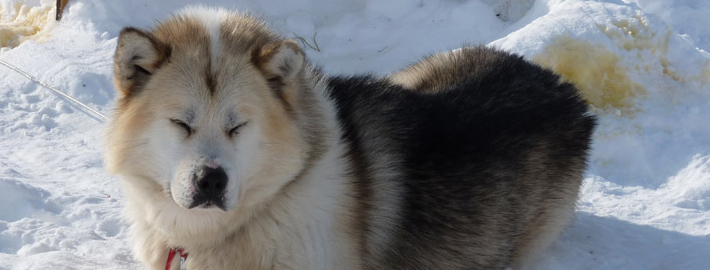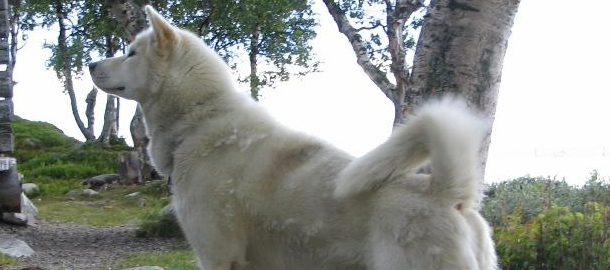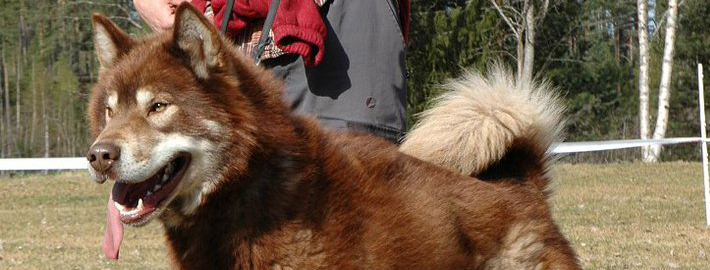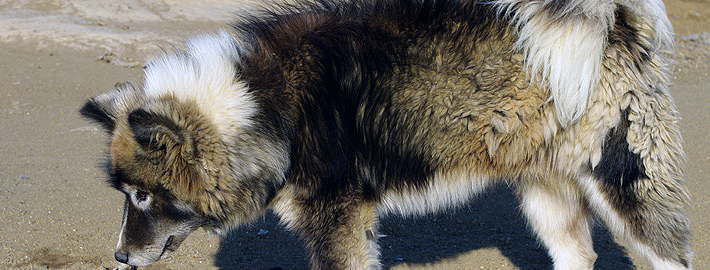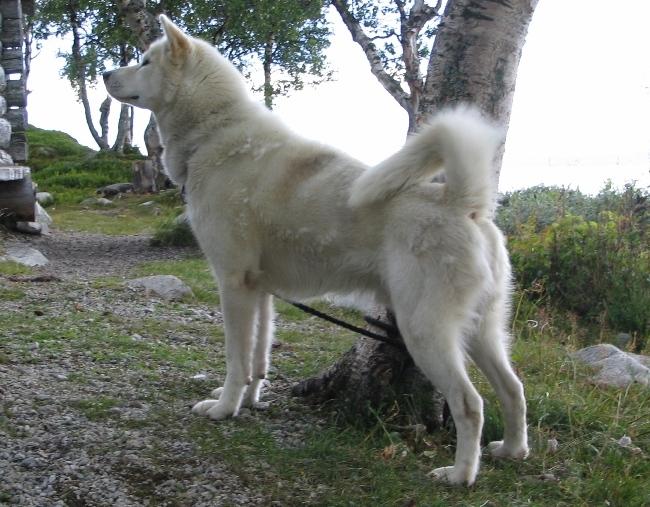What makes the Greenland Dog Unique?
The Greenland Dog (Danish: Grønlandshunden, also known as Greenland Husky) is a large breed of husky-type dog kept as a sled dog and for hunting polar bear and seal. This is an ancient breed, thought to be directly descended from dogs brought to Greenland by the first Inuit settlers.
Breed Groups
Page Contents
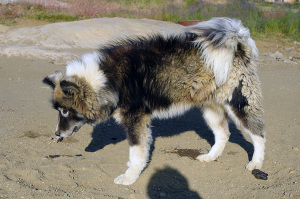
Is the Greenland Dog Right For You?
Greenland Dog is native to Greenland and also northern Scandinavia. Used as a sled dog to haul heavy loads, the Greenland Dog is a typical working husky-type dog.
He has been a loyal companion of the northern native people since earliest times and is believed to be a direct descendent of the wolf. Used to life in unforgiving northern climes, he can adapt to almost any environment. The “Greenie” makes an excellent draft dog and guardian. Once used to hunt seal, he tracks his quarry by their breathing holes in the ice. The Greenie’s numbers have declined since the advent of mechanized vehicles that are now used in their place.
In 5 Words
- Bold
- Boisterous
- Loyal
- Energetic
- Independent
Characteristics
Learn About the Greenland Dog
Description
The Greenland Dog is similar to the Canadian Eskimo Sleddog, but is not as heavy and slightly taller. It has a thick stand-off outer coat and dense under wool, which allows it to withstand constant outdoor living in temperatures that can reach -50 to -75 degrees Fahrenheit. It has small triangular ears which rarely get frostbite. The head is robust, broad and wedge shaped. The jaws are extremely powerful. It has a large, bushy tail, which curls over the dog’s back and protects the dog’s face while it is sleeping. The legs are well feathered and the toes are thickly furred with large pads.
Short History of the Greenland Dog
Historical evidence has been unearthed that indicates that a dog resembling the Greenland was brought to the country by the Sarqaq people some 4000-5000 years ago and other artefacts found with the human and canine remains suggest that these people originated from Siberia. Indeed, remains found on the New Siberian Islands have been carbon dated and show that the breed was living on the island some 7000 years ago. This makes the Greenland Dog one of the oldest breeds in the world.
Early Europeans settlers, including the Vikings, learnt sledding and hunting skills from the Inuit peoples and in doing so began to use these dogs in their ventures hunting, sledding and exploring across the Arctic.
It’s thought that the Greenland made its first appearance on UK soil in the 1750s and a bitch was shown at one of Britain’s first ever dog shows in Darlington in 1875. She caused such a stir that her debut was reported in the Live Stock Journal and Fanciers Gazette, published in August 1875. Five years later the breed was recognised by the Kennel Club at its foundation.
Interestingly, many Greenland Dogs have been used by explorers and formed an essential part of their retinue. Perhaps the most famous explorer to employ Greenland Dogs was native Greenlander Fridtjof Nansen, who was a famous arctic explorer and used the dogs during his famous voyage across the Arctic Ocean on his equally famous ship, Fram. Roald Amundsen also used Greenlands during his expeditions and hand-picked 97 animals to accompany him on his trip to Antarctica and his South Pole adventure – more dogs were taken than needed, the idea being that the weakest dogs could be culled and fed to the stronger animals during the journey.
Temperament
The Greenland Dog does not have the temperament to be a house pet. They are a working breed, and will become bored if they are not given work to do. They are independent, stubborn, and play rather roughly. They will be extremely unhappy if they are expected to simply lie around the house. However, when not raised in a pack environment, they can bond with and be affectionate toward their owner – as long as that individual establishes that he (or she) is boss.
Caring for Your Greenland Dog
General Health
The Greenland Dog is unusually resilient and healthy. This breed is not commonly plagued by genetic conditions. Only a few have developed issues with hip and elbow dysplasia, eye diseases, ear infection, and bloat. Work related injuries, such as strained muscles, are the most common health problem.
Grooming & Bathing
Greenland Dogs require medium amounts of grooming and need to be brushed 2-3 times each week. They will need to be bathed every two to three months and the fur around their paws will need to be clipped to prevent matting.
Exercise & Training
Greenland Dogs require heavy exercise. They will require at least an hour of walking/running each day otherwise they may become destructive.Training this dog is a challenge! It is an independent breed that is used to working on its own. It will not be an easy task to train this dog. Early age training, when the dog is still young, should prove wholly worthwhile. The owner or handler of this dog should be patient and determined as well as show true packleader qualities to make this dog follow the rules.

